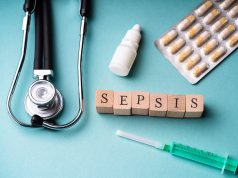ACEs contribute substantially to suicide attempts, seriously considering attempting suicide, prescription opioid misuse
By Elana Gotkine HealthDay Reporter
WEDNESDAY, Oct. 9, 2024 (HealthDay News) — Adverse childhood experiences (ACEs) are common in U.S. high school students, according to research published in a supplement to the Oct. 10 issue of the U.S. Centers for Disease Control and Prevention Morbidity and Mortality Weekly Report.
Elizabeth A. Swedo, M.D., from the CDC in Atlanta, and colleagues present the first national prevalence of self-reported ACEs among U.S. high school students aged younger than 18 years and estimate the associations between ACEs and 16 health conditions and risk behaviors using nationally representative 2023 Youth Risk Behavior Survey data. The exposures measured were lifetime prevalence of individual ACEs (emotional, physical, and sexual abuse; physical neglect; witnessed intimate partner violence; household substance use; household poor mental health; and incarcerated or detained parent or guardian) and cumulative ACE counts.
The researchers found that ACEs were common, with 76.1 percent of students reporting one or more ACEs and 18.5 percent reporting four or more ACEs. Emotional abuse, physical abuse, and household poor mental health were the most common ACEs (61.5, 31.8, and 28.4 percent, respectively). The highest number of ACEs was seen for students who identified as female; American Indian or Alaska Native; multiracial; or gay or lesbian, bisexual, or questioning, or who describe their sexual identity in some other way. The population-attributable fractions associated with ACEs were highest for suicide attempts, seriously considering attempting suicide, and prescription opioid misuse (89.4, 85.4, and 84.3 percent, respectively).
“Preventing ACEs has considerable potential public health impact in adolescence and beyond, with substantial population-attributable fractions (>50 percent) for all violence, substance use, sexual, mental health, and suicide-related behaviors,” the authors write.
Copyright © 2024 HealthDay. All rights reserved.



















